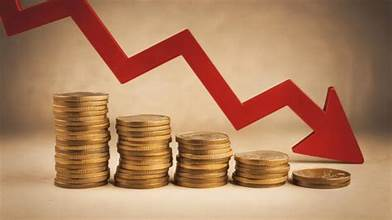The U.S. economy showed a strong sign of recovery as inflation slowed down to 2.3% in April, according to the latest report released by the U.S. Bureau of Labor Statistics (BLS). This is the lowest annual inflation rate in more than three years and has sparked hope among consumers and financial markets that the worst of price increases may finally be behind us.
April’s Consumer Price Index (CPI) data came as a relief to millions of Americans who have been dealing with rising costs of living, especially in the aftermath of the COVID-19 pandemic and the geopolitical tensions that disrupted global supply chains.
A Big Drop from 2022 Highs
In June 2022, U.S. inflation had soared to a 40-year high of 9.1%, driven by surging energy prices, food costs, and global disruptions. Since then, the Federal Reserve has raised interest rates several times to combat inflation. The current 2.3% inflation rate brings the U.S. closer to the Fed’s long-term target of 2%.

Federal Reserve Chair Jerome Powell said in a recent speech that “the path to price stability is ongoing, but this data shows we are moving in the right direction.” Economists view the April numbers as a milestone and a potential signal that the Fed could slow or pause further rate hikes.
What’s Driving the Slowdown in Inflation?
The biggest contributors to the decline in inflation were drops in energy and food prices. According to the BLS, gasoline prices were down by 5.6% compared to April last year. The cost of electricity and natural gas also fell, helping households manage monthly utility bills.
Food prices, which had been a persistent concern for families, also stabilized. Grocery prices grew at a slower pace, with several staple items like milk, eggs, and bread becoming more affordable.
Meanwhile, the cost of housing — a major component of inflation — showed a slower rate of increase. Shelter costs rose by 0.4% in April, compared to 0.6% in the previous month. While still elevated, this slowdown provides hope for renters and homeowners alike.
You can review the full CPI report on the Bureau of Labor Statistics website.
How Does This Affect the Average American?
A lower inflation rate means that prices are not rising as quickly, giving consumers more power over their wallets. For the average worker, this could mean paychecks stretch a little further. If wages continue to rise while inflation remains low, purchasing power will improve.
Retirees who live on fixed incomes may also benefit. When inflation is high, their buying power decreases, but a drop like this offers some financial breathing room.

Consumers may notice lower prices or slower price increases at the gas station, grocery stores, and utility bills. However, not all sectors are easing. The cost of services like car repairs and insurance continues to rise, though at a slower pace than before.
What Does This Mean for Interest Rates?
The Federal Reserve has increased interest rates 11 times since March 2022, pushing its benchmark rate to its highest level in over two decades. These moves were intended to cool down spending and bring inflation under control.
With April’s CPI showing significant improvement, market analysts now believe the Fed may pause further interest rate hikes or even consider a rate cut later this year if the trend continues. This could be good news for borrowers, including those with mortgages, student loans, or credit card debt.
However, some experts are urging caution. “While the numbers are positive, the Fed may want to see consistent data over several months before making a shift in monetary policy,” said Laura Garcia, a senior economist at MarketPulse Analytics.
Market Reaction and Economic Forecast
Wall Street responded positively to the April inflation report. The Dow Jones Industrial Average jumped 350 points, while the S&P 500 and Nasdaq also recorded solid gains. Investors welcomed the easing inflation as it reduces uncertainty around the Fed’s next moves.
Gold prices dropped slightly as the dollar strengthened, and Treasury yields fell in response to expectations of a policy pause. Tech and consumer goods stocks led the rally, reflecting growing optimism in the broader economy.
Looking ahead, many economists predict that inflation could remain in the 2-3% range for the rest of 2025, assuming no major shocks to energy prices or supply chains. Continued easing in housing and food costs will be key to sustaining this momentum.
What Consumers Should Watch Next
Even though inflation is falling, consumers should remain financially cautious. Rising costs in certain sectors, such as healthcare and insurance, may still impact household budgets. Additionally, global events — such as oil supply disruptions or geopolitical instability — could quickly reverse inflation trends.
Financial advisors suggest consumers take this opportunity to pay down debt, build savings, and lock in lower interest rates where possible. With the economy showing signs of stabilization, households may be better positioned to make informed financial decisions in the months ahead.
For more details on personal finance strategies during inflation, visit Investopedia’s Inflation Guide.
Final Thoughts: A Step Toward Stability
April’s 2.3% inflation rate is a welcome development for both American families and policymakers. After years of price hikes, this decline shows that efforts to manage the economy are working.
Still, it’s too early to declare complete victory over inflation. Ongoing monitoring, smart policy decisions, and consumer awareness will be vital to keep inflation in check and ensure economic stability moving forward.
Stay updated on inflation and other economic trends by checking in regularly with reliable financial sources like the Federal Reserve and Bureau of Economic Analysis.
Also Read – U.S. and Saudi Arabia Sign Massive $1 Trillion Deal






